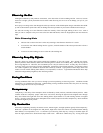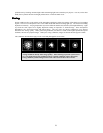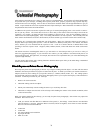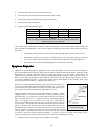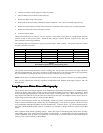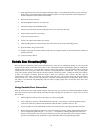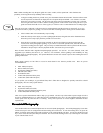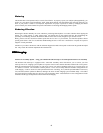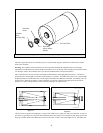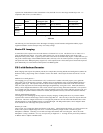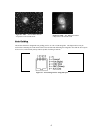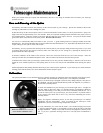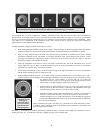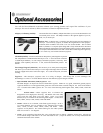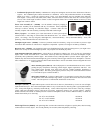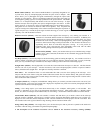
45
The above figure shows how the secondary mirror is removed when using the optional CCD camera at f/2 and the
Fastar Lens Assembly.
Warning: The secondary mirror should never be removed unless installing the optional Fastar Lens Assembly.
Adjustments to collimation can easily be made by turning the screws on the top of the secondary mirror mount without
ever having to remove the secondary mirror (see Telescope Maintenance section of this manual).
The F/# stands for the ratio between the focal length and the diameter of the light gathering element. A NexStar 11
optical tube has a focal length of 110 inches and a diameter of 11 inches. This makes the system an f/10, (focal length
divided by diameter). The NexStar 8 has a focal length of 80 inches and a diameter of 8 inches, also making it an f/10
optical system. When the secondary is removed and the CCD camera is placed at the Fastar position, the system
becomes f/2, this is a unique feature to some Celestron telescopes (see figures below).
Fastar Lens Assemb
l
The key factors for good CCD imaging are; exposure time, field-of-view, image size, and pixel resolution. As the F/#
goes down (or gets faster), the exposure times needed decreases, the field-of-view-increases, but the image scale of the
object gets smaller. What is the difference between f/2 and f/10? F/2 has 1/5 the focal length of f/10. That makes the
CCD Camer
a
Figure 8-3
Fi
g
ure 8-4
Figure 8-2 - The Fastar Compatible Optical System
Secondary
Mirror
Secondary
Mirror
Retaining Ring
Corrector Plate
Secondary
Mirror Mount
Handle



